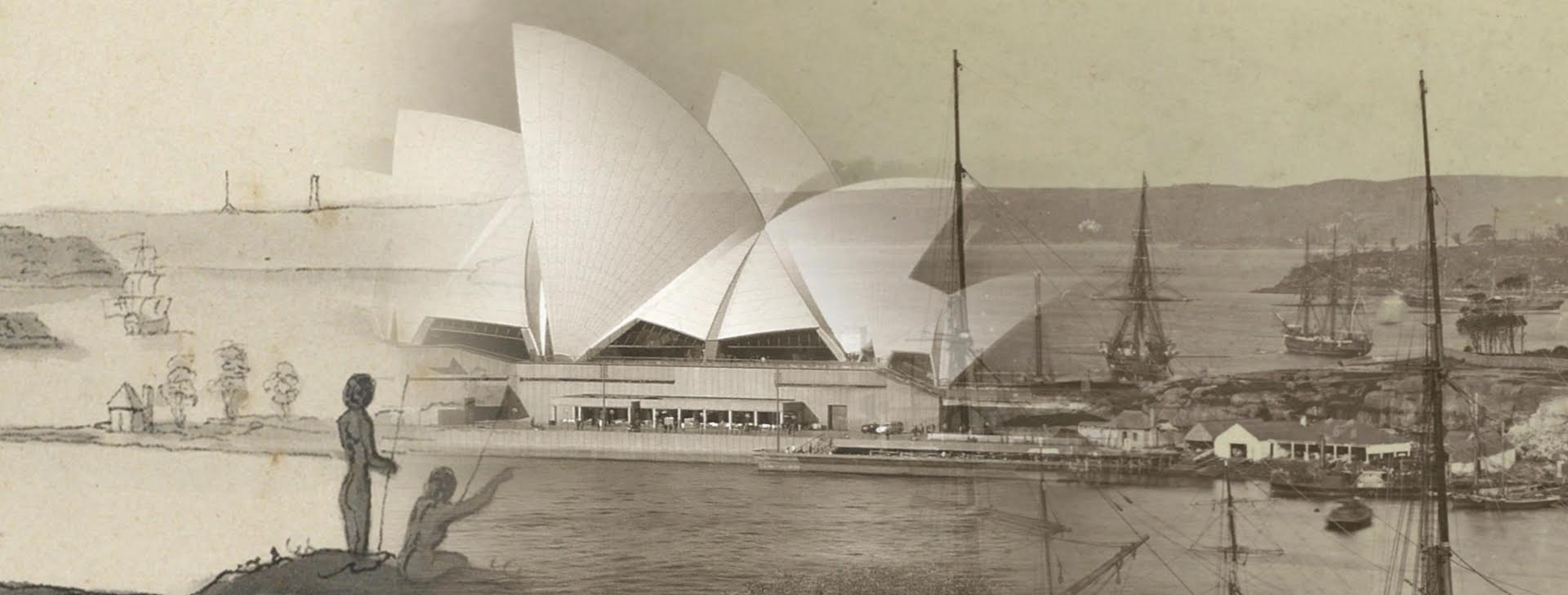By Paul Irish, whose book Hidden In Plain View: The Aboriginal People of Coastal Sydney (2017) is out now, published by NewSouth Publishing.
We all recognise the Sydney Opera House. Many of us also know that it is built on a point named after early colonial Aboriginal identity Bennelong, who lived there in the 1790s in a hut built for him on the orders of Governor Phillip. And before Bennelong, Aboriginal people probably fished the point for thousands of years.
So far, so typical in the run of colonial urban histories – a long Aboriginal history that ends and is literally built over and erased soon after the arrival of Europeans. It’s a tragic history we can respectfully remember, but appears confined to the early colonial past. When we look closer, a more complex story emerges.
The Aboriginal history of Bennelong Point did not end in the 1790s. Nearly a century later, in the early 1880s, Aboriginal people were living on the point in an abandoned government boat repair shed. At the time, they were cast as outsiders, who had drifted into Sydney for a government handout. Further inspection shows they were not only linked to Sydney but lived, travelled and married across a network of settlements around the harbour, Botany Bay and coastal areas to the north and south of Sydney. They continued to fish, selling their surpluses for other things they needed; they developed relationships with colonial families that, in some cases, lasted generations They changed with the times but they never lost sight of where they were from.
I have traced the history of a group of 50 to 100 Aboriginal people who continued to call the coastal part of Sydney home throughout the nineteenth century. Some of their descendants still live in Sydney today and are primarily linked to the Aboriginal community at La Perouse. They have always maintained their local connections but the historical records have always seemed to point to the dying out or disappearance of local people sometime in the mid-nineteenth century.
Their story of continuity emerged from triangulating the previous research of professional and La Perouse community historians with newly available digitised records and fragments of information scattered across many other archives. By focussing on repeatedly used places and frequently mentioned people, a consistent picture began to emerge of a network of Aboriginal settlements that shifted in response to the growth of colonial Sydney. Not, as you might expect, moving ever outwards, but often taking advantage of gaps in the colonial grid and of new economic opportunities.
Some of the coastal people camped in the government boatsheds in 1881 were becoming involved in the colonial government’s re-engagement in Aboriginal affairs after many decades of indifference. The misidentification of boatshed residents as outsiders and attempts to keep them out of Sydney led directly to the formation of the Aborigines Protection Board. In coastal Sydney, Board assistance could virtually only be obtained at an Aboriginal fishing village at La Perouse. Over the next two decades, and with the added influence of missionaries, this caused La Perouse to grow at the expense of the other settlements until it became one of the only places where coastal Sydney people lived. Their descendants know this as their story, but it is also the complex and culturally entangled story of colonial Sydney, a story that I hope many more people come to know.
Details of Paul’s upcoming talks and other events can be found at www.coastalsydneystories.com/events
Image (editing by David Kari): Hidden history in Sydney’s most iconic place. The centre image shows Bennelong Point in its current and best known form as home to the Sydney Opera House (Image: Paul Irish). The left image shows Bennelong Point in the 1790s with the hut of early colonial Aboriginal identity Bennelong (SLNSW DG V1/13). The right image shows the Government Boatshed which was used by Aboriginal people in the late 1870s and early 1880s and was the catalyst for the formation of the first Aboriginal Protectorate in New South Wales (SLNSW SPF 774).
